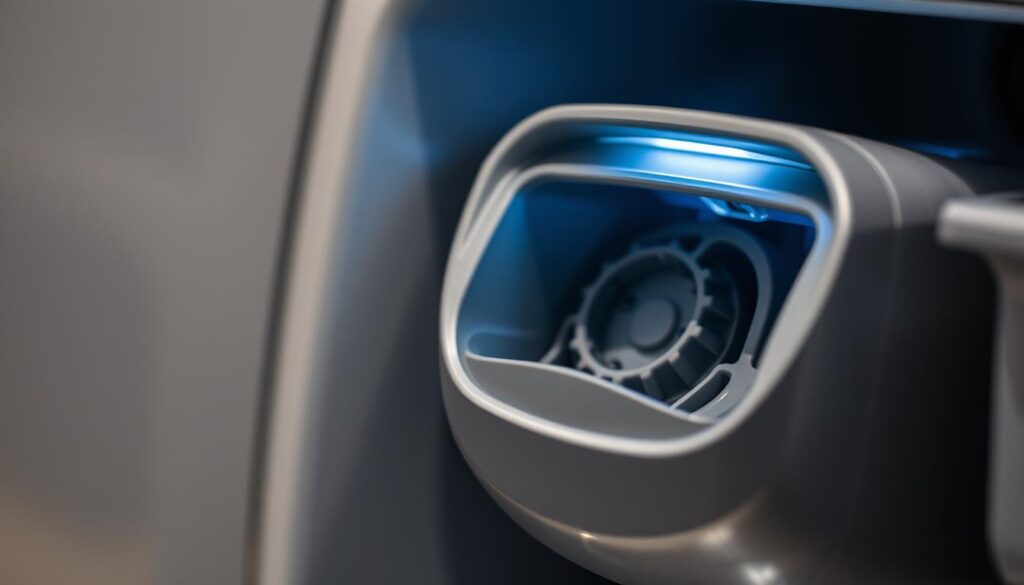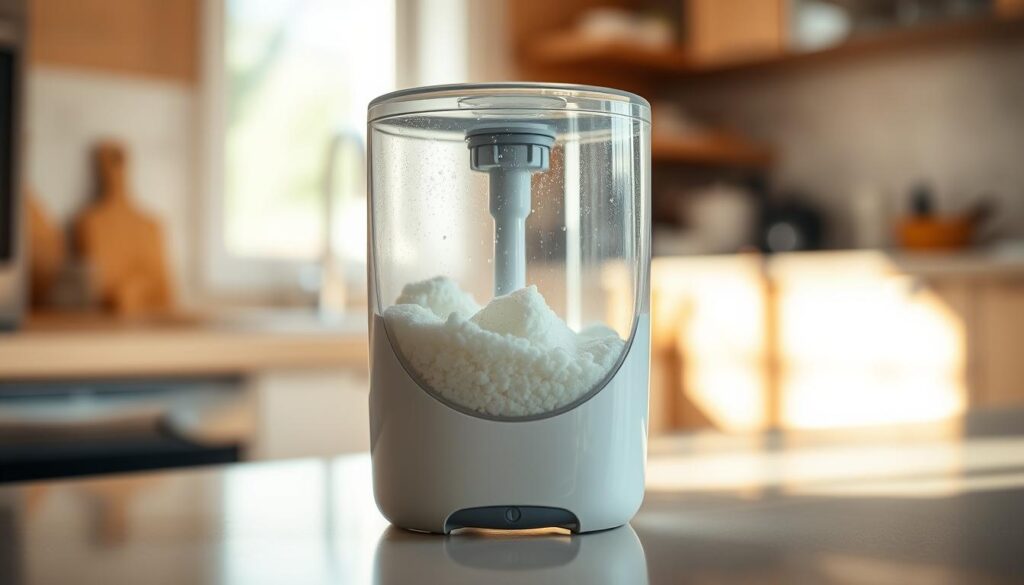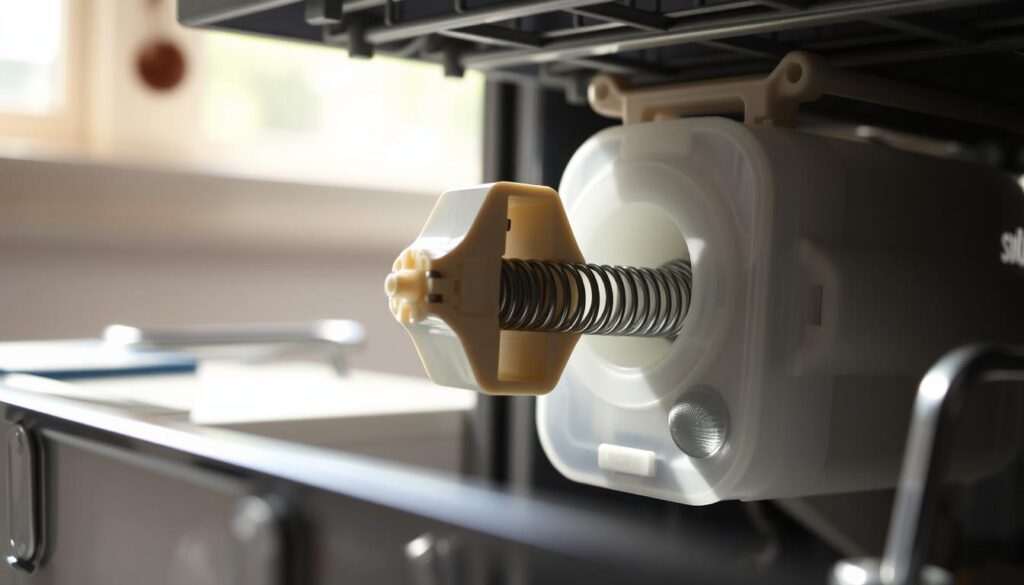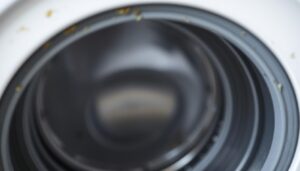Are you tired of running your dishwasher only to find that your dishes remain dirty due to a faulty soap dispenser?
This is a frustrating issue many face, often stemming from simple obstructions or more complex mechanical failures.
Understanding the root cause is crucial to resolving the problem efficiently. In this guide, we’ll explore the common causes and provide a step-by-step approach to diagnosing and fixing the issue with your dishwasher’s dispenser.
Key Takeaways
- Identify common obstructions that prevent the soap dispenser from opening.
- Diagnose the issue through a systematic troubleshooting approach.
- Learn step-by-step fixes for various potential problems.
- Understand when to consider professional repair or replacement.
- Implement preventive measures to avoid future issues.
Understanding Why Your Dishwasher Soap Dispenser Isn’t Working
If your dishwasher soap dispenser isn’t releasing detergent during the wash cycle, it’s essential to understand the underlying mechanics. The soap dispenser’s primary function is to release detergent at the optimal time during the wash cycle, ensuring your dishes are thoroughly cleaned.
How the Soap Dispenser Should Function
The detergent dispenser typically has two compartments: one for pre-wash and another with a hinged door that releases during the main wash cycle. The timing mechanism controlling when the dispenser door opens varies by dishwasher model, using either a wax motor, bi-metal switch, or timer-controlled system.
Signs of a Malfunctioning Dispenser
You can identify a malfunctioning dispenser by signs such as detergent residue left in the dispenser after a cycle or visibly dirty dishes. Understanding these signs will help you diagnose the issue with your dishwasher soap dispenser. A properly functioning dispenser is crucial for effective dish cleaning.
By understanding how the soap dispenser should function and recognising the signs of a malfunction, you’ll be better equipped to troubleshoot the problem with your dishwasher’s soap dispenser.
Common Causes of Dishwasher Soap Dispenser Not Opening
A malfunctioning dishwasher soap dispenser can be attributed to various causes, which can be broadly categorised into mechanical and electrical problems. Understanding these causes is crucial to troubleshooting and resolving the issue effectively.
Mechanical Issues
Mechanical issues are a common reason for a soap dispenser to fail. These can include physical obstructions, a damaged dispenser door, broken springs or hinge pins, and detergent buildup that hinders proper operation. For instance, if the door is twisted or cracked, it may not open correctly. Similarly, a bent hinge pin or a damaged spring can prevent the dispenser from functioning as intended.

Electrical Problems
Electrical issues can also be a significant factor. These often involve the wax motor, which heats up and expands to release the dispenser, the timer, or control panel malfunctions. In older models, a bi-metal switch might be the culprit. Identifying whether the problem lies with these electrical components can help you determine the next steps in troubleshooting or repairing your dishwasher soap dispenser.
By understanding the reasons behind your soap dispenser’s failure to open, you can decide whether to attempt a DIY fix or seek professional assistance. This knowledge will also help you appreciate the complexity involved in repairing different dishwasher models.
Check for Obstructions: The First Troubleshooting Step
The simplest way to troubleshoot a dishwasher soap dispenser that isn’t opening is to look for obstructions. When your dishwasher soap dispenser fails to dispense detergent, it’s often due to items blocking the dispenser door or interfering with the dishwasher’s operation.
Improper Loading Techniques
One of the most common causes of a blocked dispenser is improper loading of dishes. Tall items like cookie sheets and cutting boards placed in the lower rack can prevent the dispenser from opening. Similarly, the handles of pots and pans might block the spray arm, stopping water from reaching the dispenser.
How to Properly Arrange Dishes
To ensure your dishwasher soap dispenser operates correctly, it’s crucial to load your dishes properly. Here are some guidelines to follow:
| Loading Technique | Correct Method | Incorrect Method |
|---|---|---|
| Placing Tall Items | Position tall items like plates and serving dishes along the sides or back of the lower rack. | Avoid placing tall items directly in front of the dispenser. |
| Arranging Pots and Pans | Face the soiled surfaces towards the center for better water circulation. | Don’t block the spray arms or the dispenser door with handles or large items. |
| Dish Orientation | Place bowls and cups at an angle to allow water to flow out. | Don’t nest dishes together as this can prevent water from reaching all surfaces. |
By following these guidelines, you can ensure that your dishwasher soap dispenser is not obstructed and that water can circulate effectively to clean your dishes.
To test if an obstruction is causing the issue, try running a cycle with an empty or minimally loaded dishwasher. If the dispenser opens correctly, it indicates that the problem is likely due to improper loading. Rearranging your dishes and ensuring that no items are blocking the dispenser door or spray arms can resolve the issue.
Inspecting the Dispenser Door for Damage
Inspecting the dispenser door for damage is a vital troubleshooting step. The dispenser door is a critical component of your dishwasher, and any damage to it can prevent the soap dispenser from opening properly.
Signs of Cracks and Warping
Start by performing a visual inspection of the complete dispenser assembly. Look for signs of cracks, warping, or heat damage along the dispenser and dispenser door. Soap and residue build-up around the dispenser and door can also prevent the door from opening.
When Replacement Is Necessary
Manually open and close the dispenser door to check if it sticks. If you notice any damage or if the door does not operate smoothly, it may be necessary to replace the entire dispenser assembly. In most cases, the dispenser door is not available separately, so replacing the assembly is the most effective solution.
Cleaning Detergent Buildup from Your Dispenser
Detergent residue can gradually accumulate and prevent your dishwasher soap dispenser from opening properly. This buildup can occur over time due to the use of detergent and other substances.

Effective Cleaning Methods
To clean the dispenser, start by manually opening and closing the dispenser door to check if it sticks. If it does, use a dish towel soaked in warm, soapy water to wipe away any residue. You can also use vinegar and a soft brush to remove hardened detergent residue safely.
Preventing Future Buildup
To avoid future buildup, ensure you’re using the right type and amount of detergent for your water hardness and dishwasher model. Regular cleaning can help maintain the dispenser’s functionality.
Examining the Door Spring and Hinge Pin
To troubleshoot a malfunctioning soap dispenser door, examining the door spring and hinge pin is essential. These components work together to ensure the dispenser door opens correctly during a wash cycle.
Accessing the Components
You will need to locate and access the door spring and hinge pin, which may be concealed by covers or panels in your dishwasher model. To do this, consult your user manual or manufacturer’s instructions for guidance on safely removing these covers without causing damage.
Testing Spring Tension
Once accessed, test the spring tension to determine if it’s providing enough force to open the dispenser door. A spring that is too weak or damaged will fail to open the door properly.
Replacing Damaged Parts
If upon inspection, you find the hinge pin is bent or the spring is damaged, replacement is necessary. Sourcing the correct replacement parts for your dishwasher model is crucial. Ensure you obtain parts that match the original specifications to maintain the dispenser’s functionality.
Dishwasher Soap Dispenser Not Opening Fix: The Wax Motor
The wax motor is a critical component that actuates the soap dispenser door in your dishwasher. It operates by expanding when heated, which triggers the release of the dispenser door at the appropriate time during the wash cycle.
Understanding the Wax Motor’s Function
A wax motor, also known as a thermal actuator, uses heat to generate mechanical motion. In the context of a dishwasher, it is responsible for releasing the soap dispenser door. This process occurs when the dishwasher reaches a certain temperature, indicating that the wash cycle is in progress.
Testing the Wax Motor with a Multimeter
To diagnose if the wax motor is functioning correctly, you need to test it for continuity using a multimeter. First, ensure your dishwasher is unplugged or switched off at the electrical box if it’s hardwired. Locate the wax motor near the detergent dispenser on the inside of the dishwasher door, and remove the door panel as necessary to access it. Disconnect the wires from the wax motor terminals, marking them for correct reconnection later.
Remove the wax motor and use a multimeter to check for continuity. If there’s no continuity, the wax motor is faulty and needs replacement.
Replacing the Wax Motor
To replace the wax motor, start by purchasing a compatible unit for your dishwasher model. Disconnect the wires from the old wax motor, if not already done during testing, and connect them to the new wax motor, ensuring they are securely attached to the correct terminals. Reinstall the new wax motor in its original position and reassemble the dishwasher door panel.
Troubleshooting the Bi-Metal Switch
The bi-metal switch plays a crucial role in releasing the detergent dispenser door in older dishwasher models when the dishwasher reaches the right temperature. Unlike newer models that use a wax motor, this component is vital for the proper functioning of the soap dispenser.
Locating the Switch
To start troubleshooting, you need to locate the bi-metal switch, which is typically positioned near the detergent dispenser on the inside of the dishwasher door. Depending on your dishwasher model, you may need to remove the inner or outer door panel to access it. First, ensure your dishwasher is unplugged or the power is shut off from the electrical box if it’s hardwired.
Testing for Continuity
To check the bi-metal switch’s alignment, close the detergent dispenser door and use a screwdriver to press on the bi-metal switch to release the dispenser door catch. If the alignment seems fine, check the connection by disconnecting the wires from the terminals on the bi-metal switch. Mark the wires to ensure they’re returned to their correct locations later. Remove the bi-metal switch and test its circuit with a multimeter to ensure it’s complete.
“A faulty bi-metal switch can be identified by checking its continuity using a multimeter,” as per standard troubleshooting practices.
Adjustment and Replacement Options
A small adjustment might resolve the dispenser issue if the alignment is the problem. However, if your multimeter indicates the bi-metal switch doesn’t have a complete pathway for an electrical current, it will need to be replaced. Ensure proper wire marking techniques are used for correct reassembly.
Key steps include: locating the bi-metal switch, testing its alignment and continuity, and making necessary adjustments or replacements.
Checking the Dishwasher Timer and Control Panel
The dishwasher timer and control panel work in tandem to regulate the dishwasher’s cycle, including the soap dispenser’s operation. Understanding their roles is crucial for diagnosing issues.
Signs of Timer Failure
A faulty timer can lead to inconsistent cycle timing or prevent the soap dispenser from opening. If your dishwasher exhibits these symptoms, the timer might be the culprit.
When to Call a Professional
Given the complexity and potential electrical hazards involved in accessing and testing the timer and control panel, it’s advisable to seek the help of an expert appliance repair technician. They can efficiently diagnose and fix issues related to the dishwasher soap dispenser.
Advanced Troubleshooting: Dispenser Actuator and Latch
Advanced troubleshooting of the dishwasher soap dispenser involves checking the actuator and latch mechanisms. These components play a crucial role in the proper functioning of the soap dispenser.
Identifying These Components
The dispenser actuator is responsible for opening the dispenser door. To identify it, you may need to consult your dishwasher’s user manual or inspect the dispenser assembly closely. The latch is another critical component that helps the dispenser door open and close properly.
Testing Procedures
To test the actuator, you can use a multi-meter to check its electrical continuity. For the latch, inspect it visually for any signs of damage or wear. Check if the latch is properly aligned and if it’s functioning as expected.
- Check the actuator’s electrical connection and ensure it’s not damaged.
- Inspect the latch for any blockages or debris that might be hindering its movement.
Replacement Guidelines
If the actuator or latch is faulty, replacement is necessary. Ensure you source the correct replacement parts by matching them with the manufacturer’s specifications. Follow the manufacturer’s instructions for installing the new components.
By following these steps, you can effectively troubleshoot and fix issues related to the dishwasher soap dispenser not opening, ensuring your dishwasher operates efficiently.
Conclusion: Ensuring Your Dishwasher Works Efficiently
You can efficiently fix your dishwasher’s soap dispenser by applying the steps outlined in this guide. To maintain your dishwasher, use the right detergent and clean the dispenser regularly. If issues persist, consider consulting a dishwasher repair expert. Proper maintenance ensures a smooth wash cycle and saves time and water.



